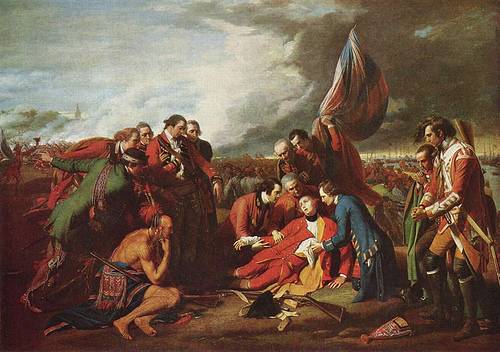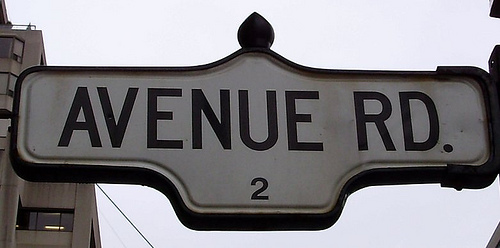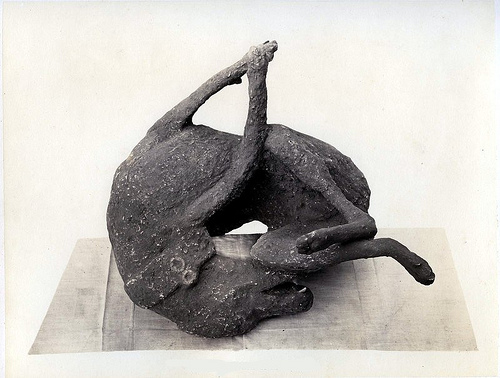
Backtalk
FLESHPOT is a phonetic reversal of TOP-SHELF — it contains the same sounds in reverse order.
Unquote
“Everyone believes very easily whatever he fears or desires.” — Jean de La Fontaine
A Generous Commission

Shortly before Nelson left England for the last time, he found himself sitting next to Benjamin West at an honorary dinner. The admiral complimented the painter on his Death of Wolfe and asked why he had produced no more pictures like it.
“Because, my lord,” West said, “there are no more subjects.” He said he feared that Nelson’s fearless courage might produce another such scene, and “if it should, I shall certainly avail myself of it.”
“Will you, Mr. West?” Nelson said. “Then I hope I shall die in the next battle.”
He got his wish — West found himself painting The Death of Nelson the following year.
R.I.P.
In memory ov
John Smith, who met
wierlent death neer this spot
18 hundred and 40 too. He was shot
by his own pistill;
It was not one of the new kind,
but a old fashioned
brass barrel, and of such is the
Kingdom of heaven.
— Headboard, Sparta Diggings, Calif., cited in Walter Henry Howe, Here Lies, 1900
“A Fat Woman Questions Her Thin Friend”
A girl to B stylish must C zippers close,
D vote E qual F fort keeping buttons in rows.
G, I tried many diets, but H ievement was poor
I was J ded, o K , when I came to her door.
I said, “L egant lady, M bodying graces,
How did you N O ble (reduce) hippy places?
Please don’t be P vish, but answer on Q—
R special S sences T eeming in U?”
“No,” she said, V ehement, “No more W!
X ercise and good eating—that is Y I am trim:
And I’m Z ro doubtful you too can be slim!”
— Lyn Coffin
Double-Take

In Britain this wouldn’t be redundant — in British English an avenue is a row of trees.
Unfortunately, that’s not so in Toronto, where Avenue Road is a major thoroughfare.
Local journalist Robert Fulford called it “an identity crisis with pavement.”
Timeless Reason
In an 1849 letter to his sister, Lewis Carroll asks which is more accurate, a clock that is right once a year or one that has stopped altogether. The stopped clock is more accurate, he says–because it’s correct twice a day.
You might go on to ask, ‘How am I to know when eight o’clock does come? My clock will not tell me.’ Be patient, reader: you know that when eight o’clock comes your clock is right; very good; then your rule is this: keep your eye fixed on your clock, and the very moment it is right it will be eight o’clock.
“‘But–‘ you say. There, that’ll do, reader; the more you argue the farther you get from the point, so it will be as well to stop.”
Double-Talk
This sentence is unwritable:
There are three ways to spell /tu/.
This sentence is unsayable:
There are three ways to pronounce “slough.”
The Dog of Pompeii

When Vesuvius erupted on Aug. 24, A.D. 79, a Roman fuller named Vesonius Primus fled toward the sea, leaving a watchdog chained to a post in the atrium of his house. It appears that the dog managed to survive the night by climbing continuously atop the mounting ash, but at dawn it reached the limit of its chain and was buried alive.
Like other victims of the eruption, its body left a vacancy in the ash layer, so a plaster cast could be made of its final position.
